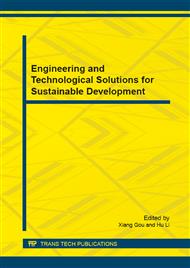p.34
p.39
p.45
p.49
p.54
p.59
p.63
p.67
p.73
Simulation of HCCI Combustion Characteristics for Low RON Gasoline Surrogate Fuels
Abstract:
A reduced chemical kinetic model (103species and 468 reactions) for new low-RON(research octane number) gasoline surrogate fuels has been proposed. Simulations explored for ignition delay time have been compared with experimental data in shock tubes at pressure of 10atm-55 atm and temperatue of 600-1400 K (fuel/air equivalence ratio=0.5,1.0,2.0 and EGR rate=0, 20%). The simulation data presented 15% enlargement compared with experiments showed applicability of the new kinetic mode in this work. A combustion simulation model has been build for HCCI(homogeneous charge compression ignition) engine with Chemkin-pro. The effects of different air inlet temperature, inlet pressure, engine speed and the fuel air equivalence ratio on the combustion characteristics of the fuel were researched. The results indicated the combustion in an HCCI engine worked sufficiently with lean mixtures and low speed. Meanwhile the material strength could be influenced when the inlet conditions changed. This helps to promote the low-RON gasoline surrogate fuel application in the HCCI engine.
Info:
Periodical:
Pages:
54-58
Citation:
Online since:
November 2014
Authors:
Keywords:
Price:
Сopyright:
© 2014 Trans Tech Publications Ltd. All Rights Reserved
Share:
Citation:


